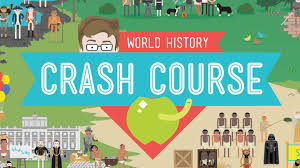
Introduction
The Crash Course video series, created by John Green, Hank Green, and their team, has grown into one of the most recognizable names in online education. Through humor, energy, and clarity, these videos introduce learners to complex subjects ranging from history to psychology. While the videos themselves capture attention, their transcripts—especially those for episode number 30 in each series—play a crucial role in learning. Transcripts are not simply records of spoken words; they are tools of accessibility, study, and preservation. This article explores what a Crash Course #30 transcript is, the content it typically covers, and why it matters so much in modern education.
What Is a Crash Course #30 Transcript?
A Crash Course #30 transcript is the text version of the thirtieth episode in a given series. Since Crash Course runs multiple series—U.S. History, World History, Psychology, Literature, and many others—the number 30 doesn’t refer to a single topic but rather to a position within that series. The transcript records every word spoken by the host, often with time stamps, occasional stage directions, and side comments such as “Thought Bubble” notes.
Key Components
-
Timestamps: Indicate when a line is spoken.
-
Narration: The bulk of the transcript, capturing the spoken words verbatim.
-
Side Notes: Sometimes transcripts include context, such as animations or diagrams, which help explain what visuals appeared on screen.
-
Humor and Asides: Many transcripts preserve the lighthearted remarks and comic timing that make Crash Course unique.
Examples of Crash Course #30 Episodes
Because each series has its own thirtieth episode, the topic varies. A couple of examples illustrate the diversity of content.
America in World War I: U.S. History #30
This episode focuses on the American entry into World War I. The transcript records John Green’s explanation of neutrality debates, German submarine warfare, the Zimmerman Telegram, and domestic changes brought by the war. Students reading the transcript can trace how the war expanded government powers, altered labor markets, and affected civil liberties.
The Haitian Revolution: World History #30
This transcript documents the rise of the Haitian Revolution, one of the most important uprisings in the Atlantic world. The narration explains the brutal plantation economy of Saint-Domingue, the influence of the French Revolution, leaders such as Toussaint L’Ouverture, and the eventual achievement of independence. The transcript preserves not just historical facts but also humorous side comments and visual cues that highlight the uniqueness of Crash Course storytelling.
Why Transcripts Matter
Accessibility
Not all learners can follow a video. Deaf and hard-of-hearing students depend on transcripts to gain full access to the material. Even for students without hearing difficulties, transcripts provide a second channel of learning. Reading while listening reinforces comprehension.
Comprehension and Study
Many learners absorb information better when they see it written out. A transcript allows students to slow down, re-read complicated passages, and underline important points. Instead of pausing and rewinding a video, a transcript makes reviewing smoother.
Language Support
For non-native speakers, transcripts are invaluable. They let learners connect the spoken word to its written form, aiding pronunciation and vocabulary building. Teachers of English as a second language frequently use transcripts as reading practice.
Citation and Research
In academic contexts, quoting from a video is messy without a written record. A transcript provides stable text for citation. Students can insert quotations in essays or projects, referencing exact wording.
Offline Learning
Videos require an internet connection, but transcripts can be downloaded or printed. Learners in regions with poor connectivity can still access the material by reading.
Challenges and Limitations
Accuracy
Automatic captions generated by video platforms are often imperfect. While edited transcripts improve accuracy, mistakes still appear—especially with historical names, technical terms, or fast-paced jokes.
Missing Visual Context
Crash Course videos rely heavily on animations, maps, and graphics. A transcript captures the words but not always the full visual meaning. For instance, when a diagram is crucial to understanding, the text may fall short.
Loss of Tone
Much of the humor in Crash Course lies in pacing and delivery. Sarcasm, irony, or comedic timing sometimes lose their punch when flattened into plain text.
Updating Issues
Occasionally videos are revised or replaced, but transcripts may lag behind. A student using an older transcript might notice differences from the current version.
Length
Transcripts can be long and overwhelming. Without proper formatting—headings, breaks, or annotations—readers might find them harder to navigate than a video.
Best Practices for Using Crash Course #30 Transcripts
-
Follow Along While Watching
Pair the video with the transcript. Reading while listening reinforces understanding and keeps learners engaged. -
Annotate the Text
Highlight important sections, add margin notes, or mark key terms. Active engagement makes the transcript more valuable than passive reading. -
Pause for Visuals
When the transcript refers to a diagram or animation, pause the video to connect the words to the image. This builds a fuller picture. -
Turn Into Study Material
Teachers and students can convert transcripts into worksheets, quizzes, or study guides. Breaking down dense sections into questions encourages deeper learning. -
Compare Across Episodes
By searching within transcripts, learners can track recurring ideas across multiple episodes. For instance, themes of revolution, liberty, or industrial change may reappear in different contexts.
Educational Impact of Crash Course #30 Transcripts
In the Classroom
Teachers often assign Crash Course videos as homework or in-class supplements. Having transcripts means students can review material later, quote directly in essays, and study at their own pace. It also allows educators to create lessons that blend visual and textual learning.
For Researchers
Scholars studying online pedagogy or discourse analysis find transcripts useful because they provide complete text for study. Patterns of language, rhetorical devices, or humor can be analyzed without needing to transcribe videos manually.
For Global Audiences
Because Crash Course has an international following, transcripts are crucial for non-English speakers. They enable translation and adaptation into multiple languages, extending the reach of educational content worldwide.
Supporting Disabilities
Providing transcripts aligns with universal design principles, ensuring content is accessible to all learners. Crash Course’s commitment to transcripts demonstrates an inclusive approach that many educators strive to follow.
The Future of Transcripts
The role of transcripts is likely to expand with advances in educational technology. Some possibilities include:
-
Interactive Transcripts: Clickable text linked directly to the relevant video moment.
-
Enhanced Descriptions: Adding notes about visuals, diagrams, or humor cues.
-
Community Editing: Crowdsourced corrections and translations to improve accuracy.
-
Multi-Language Libraries: Full translations in numerous languages, opening access to even wider audiences.
-
Integration with AI Tools: Learners may soon be able to ask questions directly from transcripts and receive instant explanations or summaries.
Why Episode 30 Transcripts Hold Special Interest
While every transcript is valuable, episode 30 often represents a turning point within a series. By this stage, the host and audience have built rapport, the narrative has matured, and the subject matter often shifts into deeper or more complex territory. For instance, World History episode 30 covers a revolution that reshaped the modern world, while U.S. History episode 30 explores America’s transition into a global power. Having transcripts for these pivotal lessons helps learners engage with material that is both foundational and nuanced.
Conclusion
Crash Course #30 transcripts may seem like simple text documents, but they are powerful educational tools. They make content accessible to all learners, provide a solid foundation for study and citation, and preserve the humor and insight of Crash Course for long-term use. While they cannot fully capture visual and tonal elements, they complement the videos, bridging the gap between entertainment and rigorous education. In a world where online learning is increasingly vital, transcripts embody inclusivity, clarity, and permanence. They ensure that knowledge is not bound by internet access, hearing ability, or time, but remains available to anyone willing to read and learn.

